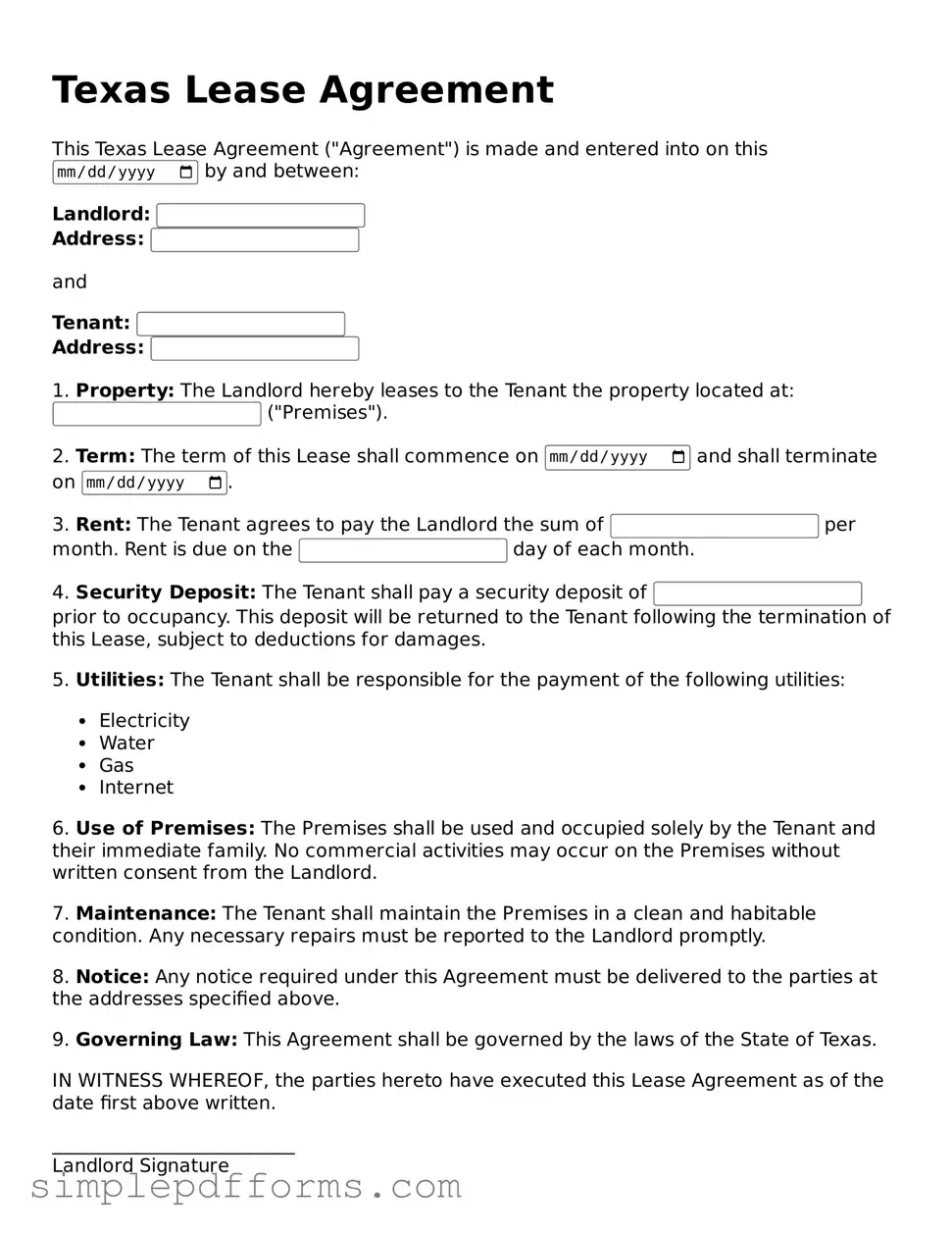Attorney-Verified Lease Agreement Document for Texas State
The Texas Lease Agreement form is a legally binding document that outlines the terms and conditions between a landlord and tenant for the rental of residential or commercial property in Texas. This form serves to protect the rights of both parties while establishing clear expectations regarding rent, maintenance, and other important aspects of the lease. Understanding this agreement is essential for anyone involved in the rental process in the state.
Open Lease Agreement Editor Now
